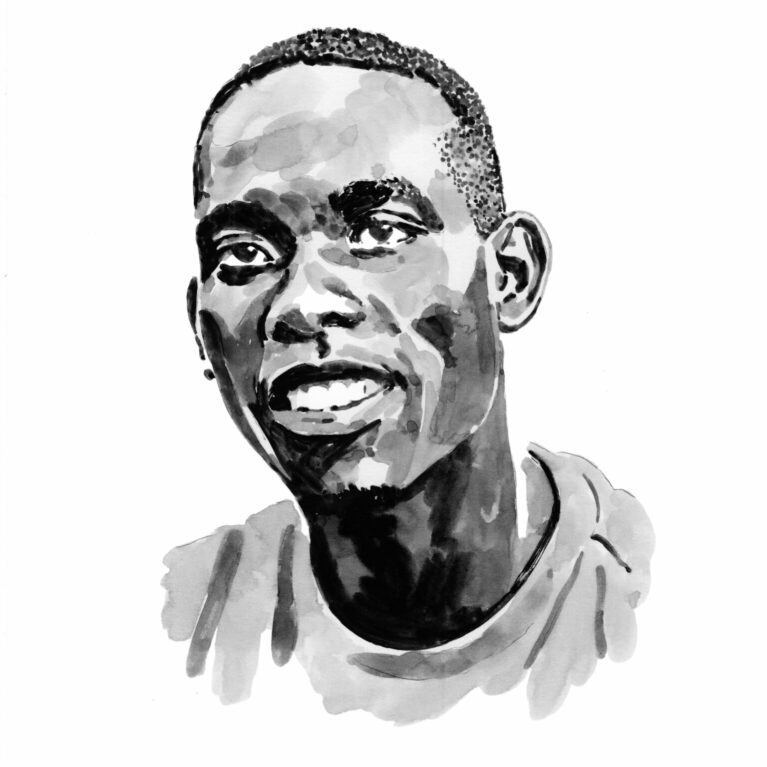Peter Musila

Who I am
I was born and raised in Machakos, a semi-arid rural area in central Kenya that doesn’t have much biodiversity. However, my fascination with wildlife and love for animals started at a young age, when I was always catching small reptiles like geckos and chameleons to try to study their interesting behaviour. I also really enjoyed swimming in the shallow streams, and it was my love for being underwater that led me to exploring the oceans. I first came to the coast for my undergraduate degree in marine biology and there got an amazing opportunity to do my first independent research in a coral restoration project. That is where I also made my first scuba dive on a coral reef – it was the most beautiful thing I had ever seen. Since then I haven’t looked back! Now, two years down the line, I find myself coordinating a marine research programme in Watamu. My first encounter with sharks and rays was quite a thrilling experience in Watamu National Marine Park. Swimming among a school of blacktip reef sharks made me so curious that I wanted to study their ecology. I have been developing my research skills and pursuing projects that aim to conserve and protect this threatened species since then, and working towards a sustainable future, where humans can co-exist with wildlife. My most enjoyable moments are when I’m underwater recording data for species diversity or mapping the habitats of these marvellous creatures.
Where I work
My work is to coordinate a marine conservation and research programme in Watamu Marine National Park, located near Watamu village on the coast of Kenya. This marine protected area boasts one of the best beaches in the world and includes lush sea-grass beds, coral reefs and wondrous biodiversity. It covers a 10-square-kilometre (3.86-square-mile) section of the lagoon and back-reef south of Watamu village and includes all habitats between the dune vegetation and the reef crest. At its southern end, a tidal inlet formed by Mida Creek creates a deeper channel and a break in the reef crest. Mida Creek contains 32 square kilometres (12.35 square miles) of mangrove forests and rich tidal mudflats, a crucial habitat for wading birds.
Many people in this area depend on marine resources for their livelihoods. Interacting with this community gives me a sense of hope for a prosperous and sustainable future for the next generation. Sharks and rays are target species caught by small-scale fisheries in Mida Creek adjacent to the marine protected area. Watamu saw a steady increase in tourists from the 1970s to the present and tourism is now the major contributor to the local economy.
Watamu Marine National Park is managed by Kenya Wildlife Service and our organisation, A Rocha, works with the agency’s permission and in close collaboration with it, providing data to implement a management plan for the marine park. Many fishing communities live and fish around the park and we work closely with them through our outreach and education work to find out what is best for them. A Rocha seeks community involvement and support and helps to arrange local input and implementation of the management plan. We collaborate with several local NGOs working on other aspects of marine conservation.
What I do
With my colleagues, I am currently working on several conservation and research projects, which include describing the elasmobranch species and the habitats they use in the Watamu marine protected area and engaging local communities in hands-on conservation activities such as restoration of degraded habitats like beaches and coral reefs. Another ongoing project is assessing the status and trend of corals in the marine environment and how they are affected by coral bleaching and warming oceans. We conduct regular plastic clean-ups and research on microplastic pollution, particularly nurdles. Local rockpools teem with life, including a regionally endemic coral, the crisp pillow coral Anomastraea irregularis, which we are studying.
A Rocha has a field study centre located directly on the shore of the marine park where guests, researchers and staff can stay and interact together over meals, fun and work. Our organisation integrates values and faith into the life of the community and motivates much of our work, but remains committed to collaboration with the local community, guests and staff who might be motivated by other values. The goal is to have an inclusive community that seeks to work with any and all who are committed to caring for this beautiful place. This means that the work is not just a day job, but a way of life that integrates holistically all aspects of daily life. Each day may be very different, but working together as part of a community seeking the flourishing of our local place is an exciting adventure.
